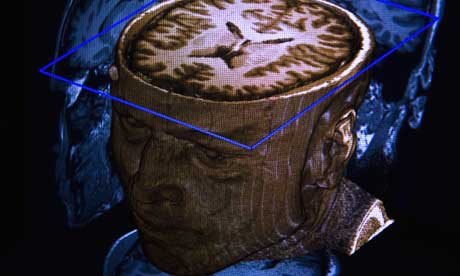
Rapid advances in neuroscience could have a dramatic impact on national security and the way in which future wars are fought, US intelligence officials have been told.
In a report commissioned by the Defense Intelligence Agency, leading scientists were asked to examine how a greater understanding of the brain over the next 20 years is likely to drive the development of new medicines and technologies.
They found several areas in which progress could have a profound impact, including behaviour-altering drugs, scanners that can interpret a person's state of mind and devices capable of boosting senses such as hearing and vision.
On the battlefield, bullets may be replaced with "pharmacological land mines" that release drugs to incapacitate soldiers on contact, while scanners and other electronic devices could be developed to identify suspects from their brain activity and even disrupt their ability to tell lies when questioned, the report says.
"The concept of torture could also be altered by products in this market. It is possible that some day there could be a technique developed to extract information from a prisoner that does not have any lasting side effects," the report states.
The report highlights one electronic technique, called transcranial direct current stimulation, which involves using electrical pulses to interfere with the firing of neurons in the brain and has been shown to delay a person's ability to tell a lie.
Drugs could also be used to enhance the performance of military personnel. There is already anecdotal evidence of troops using the narcolepsy drug modafinil, and ritalin, which is prescribed for attention deficit disorder, to boost their performance. Future drugs, developed to boost the cognitive faculties of people with dementia, are likely to be used in a similar way, the report adds.
Greater understanding of the brain's workings is also expected to usher in new devices that link directly to the brain, either to allow operators to control machinery with their minds, such as flying unmanned reconnaissance drones, or to boost their natural senses.
For example, video from a person's glasses, or audio recorded from a headset, could be processed by a computer to help search for relevant information. "Experiments indicate that the advantages of these devices are such that human operators will be greatly enhanced for things like photo reconnaissance and so on," Kit Green, who chaired the report committee, said.
The report warns that while the US and other western nations might now consider themselves at the forefront of neuroscience, that is likely to change as other countries ramp up their computing capabilities. Unless security services can monitor progress internationally, they risk "major, even catastrophic, intelligence failures in the years ahead", the report warns.
"In the intelligence community, there is an extremely small number of people who understand the science and without that it's going to be impossible to predict surprises. This is a black hole that needs to be filled with light," Green told the Guardian.
The technologies will one day have applications in counter-terrorism and crime-fighting. The report says brain imaging will not improve sufficiently in the next 20 years to read peoples' intentions from afar and spot criminals before they act, but it might be good enough to help identify people at a checkpoint or counter who are afraid or anxious.
"We're not going to be reading minds at a distance, but that doesn't mean we can't detect gross changes in anxiety or fear, and then subsequently talk to those individuals to see what's upsetting them," Green said.
The development of advanced surveillance techniques, such as cameras that can spot fearful expressions on people's faces, could lead to some inventive ways to fool them, the report adds, such as Botox injections to relax facial muscles.







